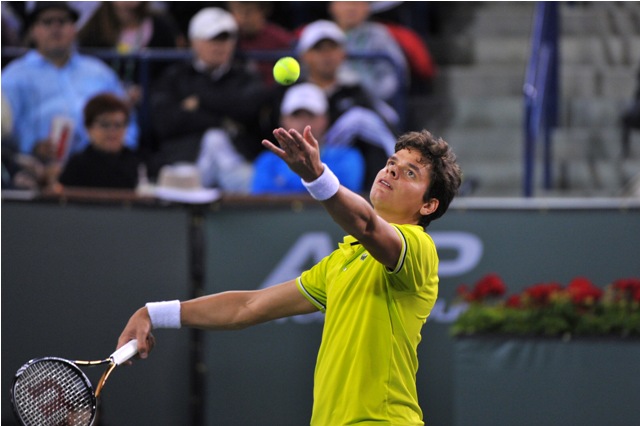In just four years, the city of Irving, Texas, has established a reputation for hosting one of the most prestigious tournaments on the ATP Challenger Tour. This week, the $125,000+H event boasts an impressive field that includes 15 players ranked in the Top 100 of the Emirates ATP Rankings in the singles draw and two former World No. 1s in the doubles draw.
The singles draw features a mix of established veterans and rising stars of the game. The top two seeds this week, 32-year-olds Guillermo Garcia-Lopez and Gilles Muller, are joined by some of the most promising teenagers in the game, including #NextGen stars Andrey Rublev, Frances Tiafoe and Jared Donaldson. A slew of former Grand Slam champions can also be found in the doubles draw, including Philipp Petzschner and former World No. 1s Mark Knowles and Leander Paes.
“It’s a Challenger, but it’s a very tough event, so I consider it as an ATP World Tour event,” said Mischa Zverev, who trains in the Dallas area. “It’s nice to have all my friends around and be home and sleep in my own bed.”
Those who are successful in Irving have often used the tournament as a springboard into the upper echelons of the game. Last year’s winner, Aljaz Bedene, went on to reach a career-high of No. 45 in the Emirates ATP Rankings last November, while 2014 champion Lukas Rosol achieved his career-best ranking of No. 26 the same month.
Meanwhile, Grand Slam-winning credentials appear to be necessary to prevail in Irving’s doubles draw. Since the first tournament was held in Irving in 2012, each winning team has featured at least one Grand Slam doubles winner, including Petzschner, Robert Lindstedt, Scott Lipsky (mixed doubles) and Jurgen Melzer.
The strong fields in Irving are aided by its place on the calendar. Players who lose early at the ATP World Tour Masters 1000 event in Indian Wells may wait as long as two weeks to play their first match at the next Masters 1000 event in Miami, so Irving offers a prime chance for extra matches and practice.
“You could say it’s an ATP tournament,” echoed former World No. 20 Dmitry Tursunov. “It’s very strong for a Challenger, but it makes sense because a lot of people come for a very long time to the United States. They play Indian Wells and Miami and there’s nothing in between, so there’s not much else to do but to play this. It’s very good for the event.”
It also doesn’t hurt that players receive free accommodation at the Four Seasons Resort and Club Dallas at Las Colinas. The luxury hotel offers world-class amenities including an 18-hole golf course, four pools, spa and full salon, meaning that players often don’t have to leave the grounds to entertain themselves between matches.
“The organisation is top notch,” said Tursunov. “You have a very good facility, a really good gym and a really good hotel, so I think it’s a very good week for the players. That’s why they come here.”


